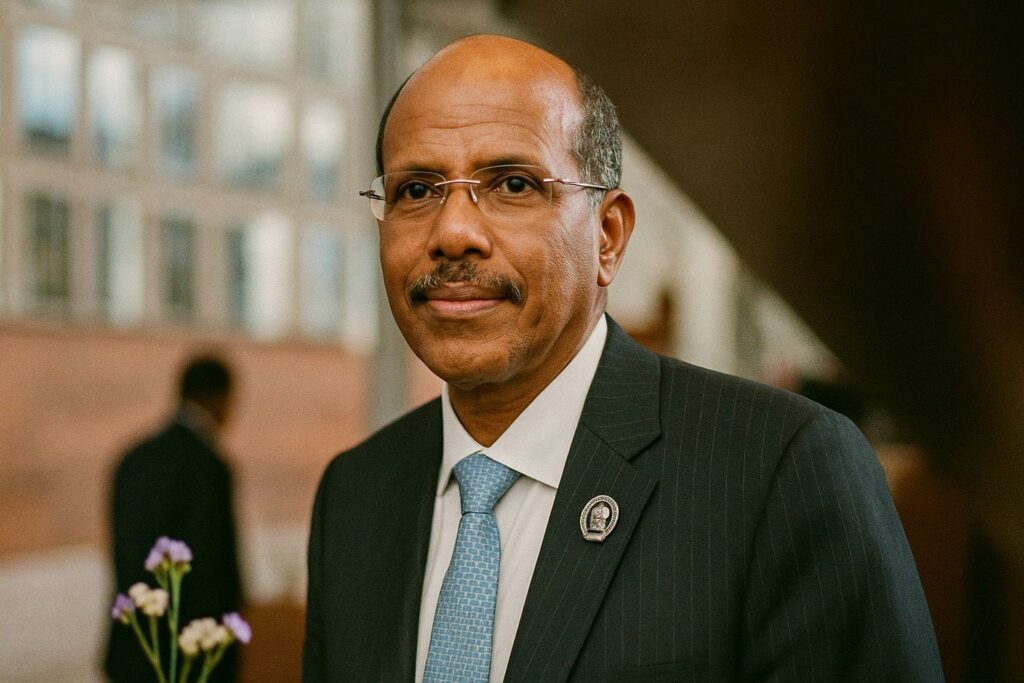Luanda Sets the Stage for a Continental Reality Check
The marble halls of Luanda’s Talatona Convention Center reverberated this week with a familiar mantra: Africa must trade more with itself. Addressing the opening plenary of the US-Africa Business Summit, African Union Commission Chairperson Mahmoud Ali Youssouf warned that the continent’s intra-African trade hovers around a modest 18 percent—far below Europe’s 60 percent or Asia’s 50 percent (UNCTAD, 2023). His prescription was unequivocal: remove tariff walls, streamline visas and accelerate the African Continental Free Trade Area, AfCFTA.
AfCFTA’s Promises Meet Ground-Level Complexities
Since its launch in 2021, the AfCFTA has been hailed as the most ambitious integration project on the continent since the creation of the Organisation of African Unity. The World Bank projects that a fully implemented agreement could lift 30 million people out of extreme poverty and boost incomes by 7 percent by 2035 (World Bank, 2022). Yet negotiators are still haggling over schedules of tariff concessions, digital trade protocols and rules of origin that determine whether a product is genuinely ‘African’. An Ethiopian diplomat at the summit conceded in private that “the devil is buried in tens of thousands of HS codes,” a reminder that legal minutiae can stall grand continental visions.
Non-Tariff Barriers and the Visa Labyrinth
For many executives, the bigger hurdle is not necessarily customs duties but the labyrinth of non-tariff measures—port delays, multiple checkpoints and, crucially, visa restrictions. In 2022 the African Development Bank recorded over 400 active non-tariff barriers on the continent, each adding cost and unpredictability (AfDB, 2022). Youssouf therefore placed mobility at the heart of his plea, arguing that without easier cross-border movement of managers and technicians, capital will continue to bypass African manufacturing hubs. Kenya’s Principal Secretary for Immigration, Julius Bitok, echoed the sentiment on the sidelines: “If we can issue e-visas to tourists in minutes, we can surely clear engineers in hours.”
Infrastructure, Capital and the Question of Credibility
Beyond policy harmonisation, physical arteries remain thin. The Lobito Corridor—highlighted at a dedicated panel—symbolises both hope and fragility: a 1 300-kilometre rail revival linking Angola’s Atlantic coast to the copper belts of Zambia and the DRC, financed in part by US lenders and the African Finance Corporation. According to McKinsey, logistics costs in sub-Saharan Africa can equal 75 percent of the value of goods for landlocked countries, triple the global average (McKinsey, 2021). Without modern ports, dry ports and rail spurs, tariff cuts risk becoming a paper victory.
United States-Africa Summit: Pragmatism or Rhetoric?
Washington dispatched a heavyweight delegation led by Under Secretary Jose W. Fernandez, who framed the summit as evidence of America’s ‘patient capital’. Yet African analysts note that US trade with Africa has stagnated at around USD 44 billion, dwarfed by China’s USD 282 billion (Brookings, 2023). Fernandez argued that the Lobito Corridor and a planned USD 500 million clean-energy package signal a qualitative shift. Skeptics counter that the US Development Finance Corporation still shies from equity stakes, preferring debt instruments that saddle already-strained treasuries.
Balancing Sovereignty and Regionalism in the Next Decade
Ultimately, integration confronts the perennial tension between national sovereignty and regional imperatives. Nigeria’s hesitation to ratify certain automotive rules of origin, or South Africa’s recent safeguard duties on poultry, illustrate how domestic lobbies can dilute continental aspirations. Former AU Commissioner Carlos Lopes, interviewed by this journal, observed that “integration is a marathon run in sprints: one fiscal crunch, one election cycle, and political will dissipates.”
Yet the counterfactual is stark. The International Monetary Fund estimates that without deeper integration, Africa could forgo USD 450 billion in potential gains over 15 years (IMF, 2023). As Luanda’s summit draws to a close, delegates depart with glossy communiqués but also a subdued recognition: dismantling visible customs posts may be easier than erasing the invisible walls of political caution.

